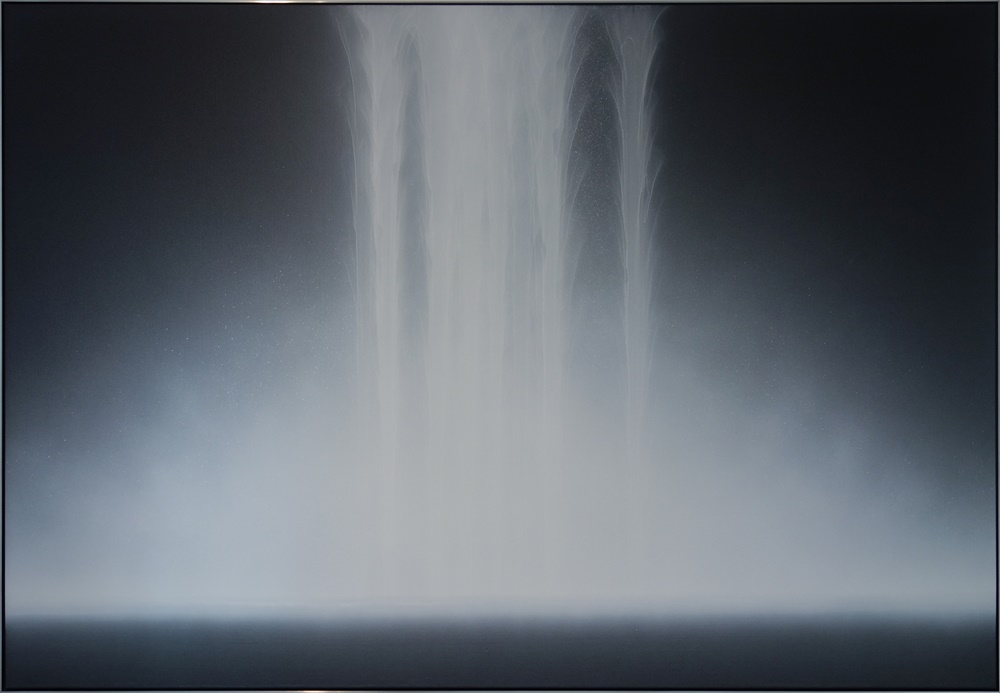Sundaram Tagore is pleased to present At World’s End, new paintings by celebrated Japanese artist Hiroshi Senju. Noted worldwide for his sublime waterfall and cliff images, Senju mixes traditional Japanese materials and Western visual language. For this show, the artist explores ethereal, abstracted landscapes.
This exhibition caps an eventful year for the artist: His work is currently on view at the Los Angeles County Museum of Art and was prominently featured in the Japanese gallery at The Metropolitan Museum of Art this past spring. He was also honored with the Isamu Noguchi Award and a large public commission to produce forty-two folding screens for the Kongōbu-ji Buddhist temple at Mount Koya in Japan.
Available:
November 9, 2017 -
January 13, 2018
About:
Hiroshi Senju is widely recognized as one of the few contemporary masters of the thousand-year-old nihonga style of painting. It is an art form that emphasizes the use of traditional Japanese materials, such as paints made from ground stone, shells and corals suspended in animal-hide binder and wash...
more >>
Hiroshi Senju is widely recognized as one of the few contemporary masters of the thousand-year-old nihonga style of painting. It is an art form that emphasizes the use of traditional Japanese materials, such as paints made from ground stone, shells and corals suspended in animal-hide binder and washi paper, a fibrous material known for its ability to resist warping or tearing, even when damp. Senju began exploring the cliff image in 2007, inspired, in part, by a piece of washi left crumpled on the studio floor. Reaching to pick it up, the artist looked more closely and was struck by the rock-like texture that formed in the creases. Two years later, Senju’s first fully realized cliffs debuted in a solo show at Sundaram Tagore Hong Kong (Out of Nature: Cliffs and Falling Water, 2009). To produce his cliff paintings, Senju uses tools and materials carefully sourced and customized over the years. He favors a mulberry washi paper from a master papermaker in Echizen, Japan, which can only be produced in winter. His brushes are made by hand, each with a designated function. Lacquered bamboo or wood handles are topped with horse, fox, sable, weasel or raccoon bristles. Senju begins by creasing the paper by hand. This unique process is physical and spontaneous, but it also requires skill and intention. The structure of the paper and its subtle folds inspire the composition of the landscape. Senju then applies natural pigments, carefully allowing delicate rivulets of paint to move across the surface. “Using acrylic pigments, I can express a contemporary, near-futuristic atmosphere, producing brand-new images,” says the artist, “while the use of traditional pigments creates a more classical atmosphere.” The fusion of these pigments—one ancient, derived from nature, and the other modern, made by human hands—results in intricately rendered images that evoke the subtle passage of time and allude to the Japanese notion of finding beauty in what is transitory. Senju spent more than two years creating the works in this exhibition, which enabled him to produce paintings in a wide range of sizes. The majority measure from 26 x 32 inches up to 90 x 72 inches—with a few sweeping exceptions, including an immersive, panoramic folding screen that spans more than 12 feet. Accompanying the cliffs is a selection of otherworldly landscapes. At first glance, the rocky terrain feels familiar, but the opaque backdrop illuminated by a mysterious glow is more celestial than terrestrial. Perhaps the artist, after shifting his gaze from waterfalls to the cliffs they flow over, is looking toward the next frontier: “My interest moved from the cliffs to beyond cliffs—what is a landscape like beyond the border?”






